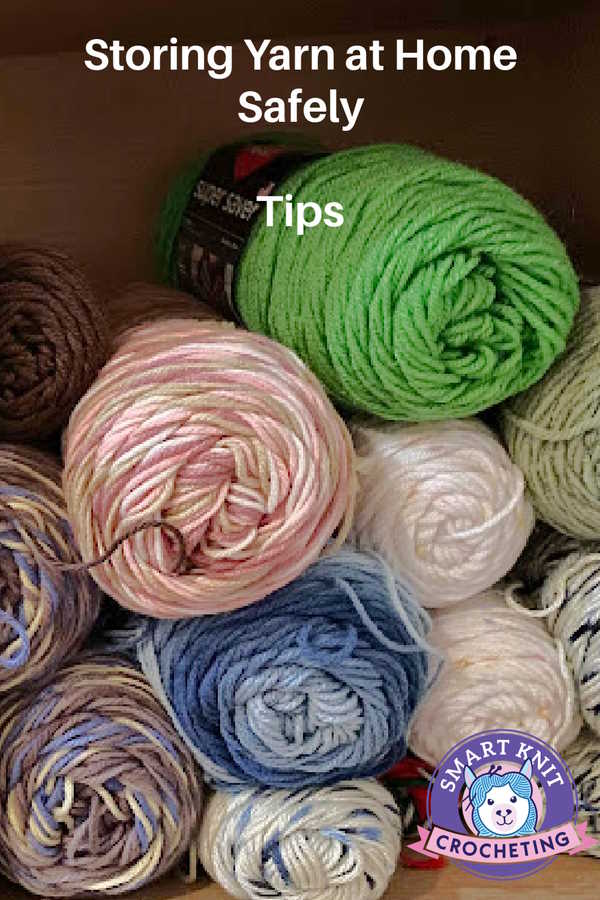- Home
- Storing Yarn at Home
Safe, Creative and Practical Tips For Storing Yarn at Home
Storing Yarn at Home by Janice Jones |Last Updated November 21, 2025
Knitting and crocheting are two of the most popular crafts out there, and with good reason. But as any avid crafter knows, it can be difficult to keep track of all the yarn you have.
That's why it's so important to store your yarn in a way that's both creative and practical. In this blog post, we'll take a look at some of the best tips for storing yarn at home.
Whether you want to organize your yarn by color, weight, or fiber, there are some practical solutions to keeping your yarn stash clean, pest free, and easily accessible to you.
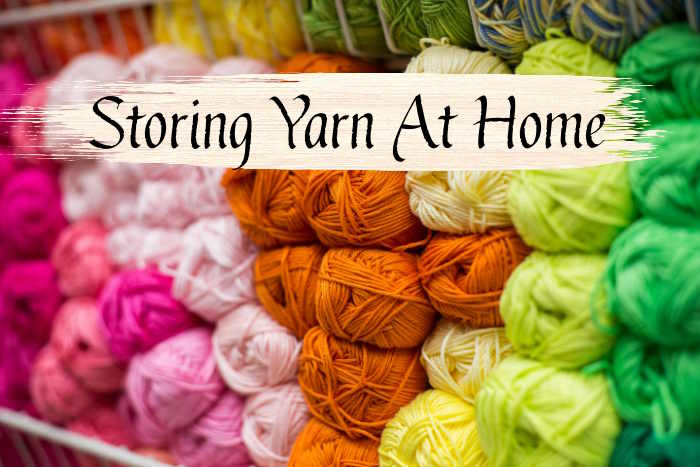
How to Store Yarn Safely
Your lovely yarns can become damaged by poor storage techniques: Consider the following
- Pets and children
- Moths and Pests
- Moisture and Mold
- Dust
- Sunlight
- Direct pressure
- Tangling
Pets and Children

Dogs and cats love to unravel yarn creating a big mess that is not easy to untangle. Furthermore, unprotected yarn can be subject to all sorts of injustices from pets and even children.
The best way to keep yarn safe from children and pets is to keep it inaccessible at all times, either high up on a shelf, or within a locked closet.
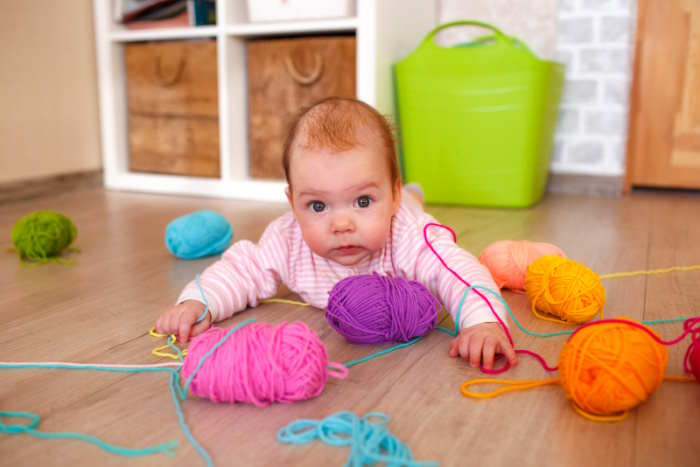
Moths and Pests
Sadly, yarn makes a great nest for vermin and moths especially love wool. We tend to protect our wool sweaters but forget that skeins of yarn can make amazing breeding grounds for insects especially moths.
If you have a stash of wool, consider adding some cedar chips or spraying with lavendar to ward off unwelcome insects. Moths don't like the smell.
Moth larva can wiggle into crevices and grow to adulthood. There's a big chance that the yarn you purchase at yard sales or thrift shops already harbor unwanted guests.
Placing these purchases in plastic freezer bags and storing in the freezer for a couple of days will eliminate any live guests.
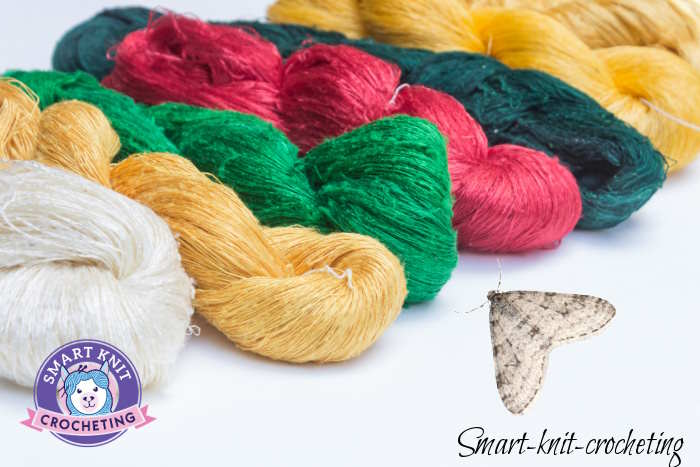
Moisture and Mold
Mold can become a problem if any of the yarn, especially wool and wool blends become wet. This is usually a problem if you store your yarn in a dark, moist area such as a basement or location where moisture can seep in.
If you live in an area with high humidity this is especially a problem. Find a drying agent that you can use to store your yarn.
You can save some of those little silica gel bags from medicines or add rice to your boxes to act as a dehumidify. That extra step will prevent rot and similar problems.
Dust
We don't often think about dust, but dust falls and can cover yarn that is not tucked away in a plastic container. Any yarn exposed is subject to dust which can make the yarn down right dirty.
The last thing you want to do is give a gift that is dirty. Dust is a major allergen for many people so dust should be off the table for your yarn stash as well.
Sunlight
Consider where you store your yarn. Is it in a dark, dry location? If not, consider where you might store it to prevent sunlight from fading the colors especially yarns made with plant-based dyes.
Direct Pressure
Normally this is not a concern unless you decide to store your yarns within a vaccum packed bag. When people have little storage space, it's reasonable to consider vaccum packed bags that can reduce the size of pillows, comforters and other clothing to the mininum.
Yarn can be packed like this as well, but should not be subjected to such pressures. These bags can crush fibers and often damage them. This is especially true of any yarns made from animal hair.
Tangling
Have you ever had to detangle a skein of yarn? If so, you know how damaging this can be, pulling and twisting the fibers, just to detangle. Excessive handling of yarn has a detrimental effect on the fiber, and should be avoided.
This often occurs when you place balls of yarn with mostly empty skeins or hanks. The ends tend to tangle creating a big mess that takes a long time to sort.
Understanding Yarn Formats (Hanks, Skeins, Cakes, etc.)
If you've done any knitting or crocheting at all, you've probably encountered a few different types of yarn packaging.
Hanks of Yarn
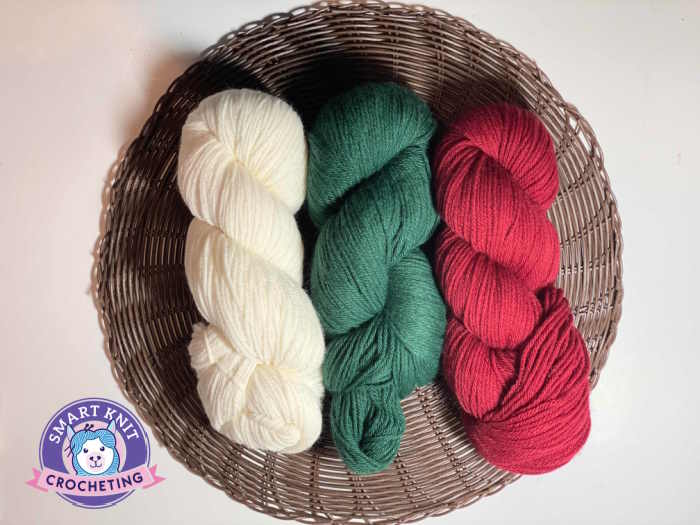
Hanks of yarn are rolled into a big circle then folded into itself. To use, it must be wound into a ball of yarn either by hand or by using a yarn swift and ball winder.
Skein
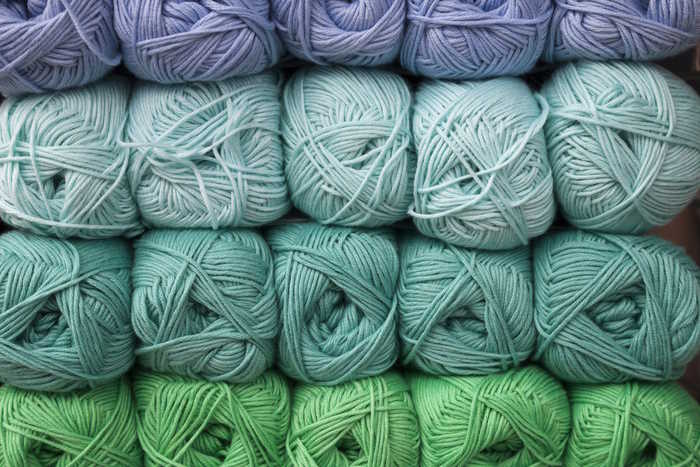
Skeins can be wrapped were the yarn is pulled out from the middle, or wound so the ends are on the outside. Once you find the end, you can cstart to knit or crochet immediately. Skeins are typically measured in yards and meters, and weighed in ounces and grams.
Yarn Cones

Cones are often used with cotton yarn and look like a cone. Once the end is found, you can begin knitting or crocheting without fear that the yarn will tangle.
Balls of Yarn
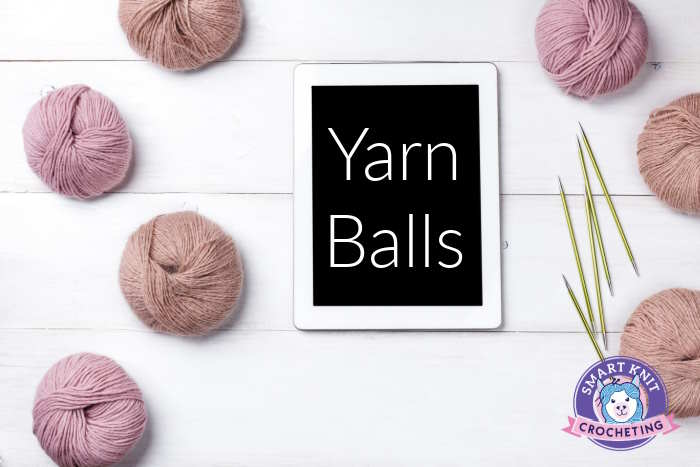
Some yarns come in the form of a ball, which is rolled into a sphere shaped shape. The ends can either be pulled from the outside or from within but either way, it is ready to be used without the addition of winding into a ball. Balls also refer to sphere shaped yarn that is either hand wound or by use of a swift and yarn winder.
Yarn Cakes
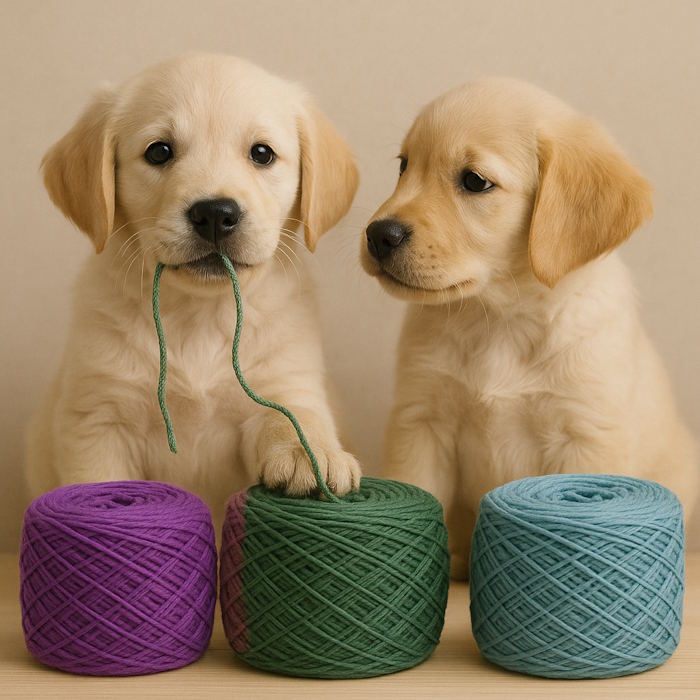
Sometimes you will see yarn wound in the shape of a cake. They are usually center pulled and formed using a swift and ball winder. They are also available commerically as a "cake" with a flat top and bottom which will not roll around like a yarn ball might.
Yarn Organization Systems, by Color, Fiber, Weight
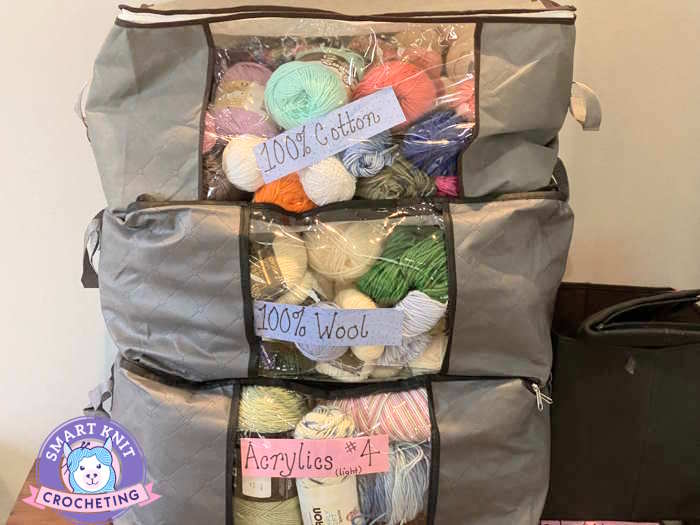
Utilizing Yarn Organization Containers is an excellent way to manage and organize your projects that use multiple packages.
This approach allows you to store individual packages in separate containers and access them when needed so you don't have to worry about digging through your yarn stash to find the yarn you need.
Yarn Organization Containers are a great way to store yarn in an organized fashion, while still being able to easily access yarn when needed. Having yarn neatly stored makes it easier to start projects and prevents the yarn from getting lost in the back of your closet or craft room!
By using this organizational system, you can easily track down specific types of yarns, know what you have on hand, and protect your projects from getting lost or disorganizd especially if you tend to work on more than one project at a time.
Thus, using a yarn storage system can be a great way to ensure that the content of your project remains organized and secure with everything you need to complete it without having to search endless for something simple like a stitch marker or tapestry needle.
Organizing Your Yarn Stash
The best way to organize a large collection of yarn is to divide it by color, weight or fiber. This is a very individualistic approach depending on the size of your yarn collection.
If you need with many different types of fibers or weights of yarn, this system becomes even more critical. If all you make are small projects using one type of yarn, say acrylic, then the detail of this system is really unnecessary.
As you will see below, chosing one system based on color, fiber, or weight, may not be the best organizational system.
Color
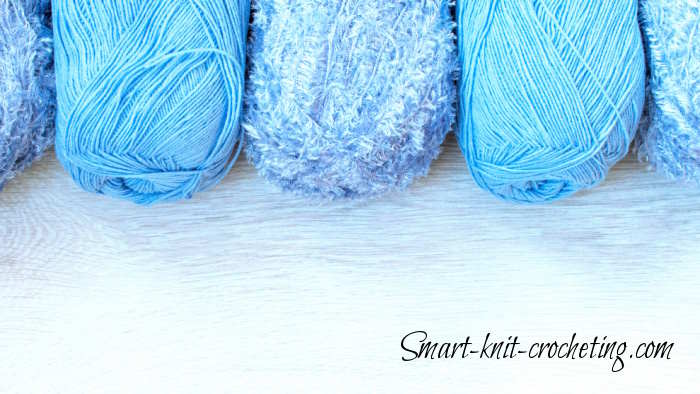
We tend to look at colors based on the color spectrum of visible light such as red, orange, yellow, green, blue and purple. Since everyone's tastes in yarn colors varies, we also add whites, blacks grays, and browns to this system.
When organizing by color, all yarns of a specific catagory of color are placed together in one or more containers.
Fiber
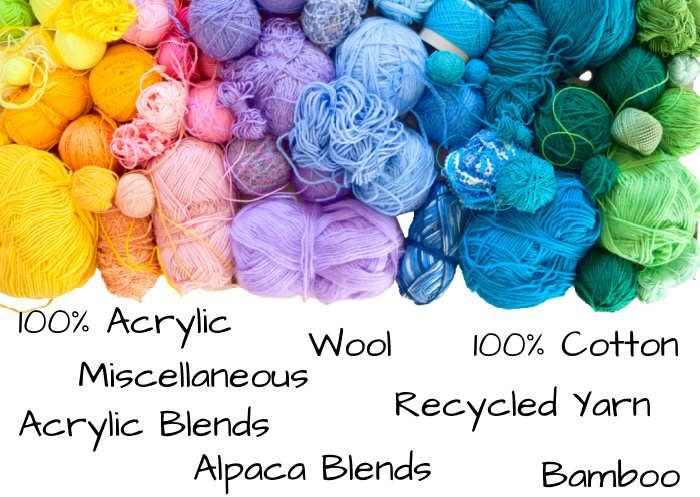
Organizing yarn by fiber becomes a bit more complicated. It's easy to separate out all of the 100% cottons from the 100% wools, from the 100% acrylics but yarn is more complicated than that.
Many yarn include blends of more than one fiber such as part alpaca and wool or bamboo and acrylic.
Very large stashes may accommodate this type of division, but for the average knitter or crocheter, they just might not have enough of a specific blend to justify a distinct container.
In this case, it's best to organize based on the predominant fiber. For example if the yarn is 90% acrylic and 10 percent silk, the ball of yarn would be placed in the acrylic bin.
If you don't have enough of one type of fiber to fill a container, mix and match, but add a label to the box so you know what is inside (Alpaca and Sheep wool).
Free Yarn Labels Based on Fiber: Download

Download Your Free Yarn Labels Now
Weight

Understand the weight of a yarn can be especially confusing for a beginning knitter or crocheter. In the United States, the Craft Yarn Council has standarized yarn weights based on number one through seven.
Remember that the weight of the yarn is not how much the skein or hank weighs but rather how thick the yarn is with a number 0 yarn being the thinest and number 7 being the thickest.
Yarn Weight O: Lace Yarn: Also called Fingering 10-count crochet thread
Yarn Weight 1: Superfine: Also called Sock, Fingering, Baby
Yarn Weight 2: Fine: Also called Sport, Baby
Yarn Weight 3: Light: Also called DK, Light Worsted
Yarn Weight 4: Medium: Also called Worsted, Afghan, Aran
Yarn Weight 5: Bulky: Also called Chunky, Craft, Rug
Yarn Weight 6: Super Bulky: Also called Super Bulky, Roving
Yarn Weight 7: Jumbo: Also called Jumbo, Roving
As you can see yarn weighs vary and can be confusing, especially if you are not familar with the yarn.
Most yarns made or purchased in the US will fall within the Craft Yarn Council's guidelines, but if you purchase a yarn outside of the US, you will be dealing with names such as worsted, aran, fingering or roving.
Creative & Space-Saving Yarn Storage Ideas
Maximizing space in the home can be challenging, but there are a few creative storage ideas that can help free up space while also looking stylish.
Storing Yarn at Home in a Vintage Trunk
For example, store yarn in a vintage-inspired trunk to store your craft supplies. Not only will it look great as a statement piece, but also it can store an abundance of yarn and other craft materials in a neat and organized way.
This method is perfect for those who have limited space but still want to store their supplies without cluttering the home.
Storing Yarn at Home on Vertical Shelving
One unique storage solution is utilizing vertical shelving or furniture that fits in small areas: corner shelves, bookcases, and armoires can fit seamlessly into any room. This is a great way to store items without taking up too much space. Not only can these pieces store items such as books, but they can also store decorative items like vases and knickknacks.
For those of us who are trying to maximize our square footage, vertical shelving is the perfect storage solution. It allows us to store our belongings in a neat and organized fashion, while freeing up floor space for other uses.
With the right measurements and materials, vertical shelving will add a touch of style and organization to any room in the house.
Storing Yarn at Home Using Multi-functional Furniture
Additionally, incorporating multi-functional furniture pieces such as ottomans with hidden storage or a bed-with-built-in drawers are great ways to maximize the space without compromising on style.
Thus, content is key when it comes to furniture in small spaces. Organization and storage solutions are important components to remember when selecting furniture. Consider incorporating multi-functional pieces that can provide both storage and comfort while saving space.
For example, yarn storage can easily be transformed into an ottoman with hidden compartments or a bed with built-in drawers. Doing so will help maximize the space while still looking stylish and chic.
Any of these storage solutions can hold plastic totes which can be stacked up to increase space.
How to Handle Yarn Clutter
We all love collecting yarn if we are knitters or crocheters. This is a natural part of our hobby. If we loved quilting, we'd have a massive fabric stash.
But just collecting wonderful types of yarn is not enough; we need to find great projects to use our lovely yarns. Just knowing what we have on hand can save us money.
For example, if you find you need to make a quick baby blanket for a friend, before shopping online or going to a yarn store, the best place to visit is your own yarn stash. Here are a few tips for using your yarn collection for your next project.
- It's best to stick with one type of fiber if you are creating a blanket, for example. Mixing machine washable yarns with hand wash fibers will not work in the same project.
- On the other hand, if all the yarns you choose are machine washable, experimentation is key when trying to make the most out of your yarn collection, so don't be afraid to try something new!
- Meanwhile, don't be afraid to take risks and explore the possibilities of your yarn stash. You never know what beautiful outcome might result from some creative experimentation! So embrace the opportunity to mix and match different fibers and colors together, and you could create something totally unique and unexpecteted.
If you find yourself dealing with excess yarn clutter, start by assessing how much yarn you have and what projects you plan to do with it.
Having an inventory of your yarn stash can help you keep track of what yarn you have and give you a sense of control over your yarn supply.
You can categorize yarn by type, color, weight, fiber, or even by project. Once you know what yarns you have, it's easier to stay organized and plan out future projects.
Knowing the yarns you have can help motivate you to make the most out of your yarn stash!
Consider paring down your existing stash if it's more than necessary for the project(s) you wish to complete within a reasonable time frame.
This will make it easier to manage your yarn and may help keep your creativity flowing. It can be really tempting to buy lots of different types and colors of yarn for a project, but if you don't need it, don't buy it!
Not only will this save money, but it will also make it easier to organize your yarn storage. Having too much yarn lying around can also be overwhelming and make it difficult to focus on the project at hand.
Taking the time to declutter your stash and only keep what you need is a great way to ensure your creativity and motivation stay fresh.
If organization is a struggle, try using clear storage totes or labeled bags to organize the yarn into categories like color, weight, or type of fiber so that it's easier to access when ready to use for your project(s).
This way, it is much easier to access when ready to use for special projects. It will aid in taking the stress out of finding the right yarn needed and help reduce the amount of time spent looking for it.
A written journal or inventory may be necessary if you have a very large stash of yarn. If this is the case, organizing by color, weight and fiber is a must.
Storing Yarn at Home
Pin for Future Refernce
Storing Yarn at Home: How to Set Up an Yarn Inventory System
I will admit that this was one of the hardest tasks I encountered as I started to amass a collection of yarn. I tend to shop sales and when I saw a great deal I'd pick up 3 or 4 skeins even though I didn't have a project immediately in mind. That is where the inspiration for this article arose.
So, I have all the yarn safely stored in containers free of sunlight, moths, my herd of dogs, and dust, but how do I know what I have?
I needed some sort of inventory. This is what I did:
Since I'm rather old school, I set up an index card system, but you can do the same thing on your computer or store online.
Information on Your Personal Yarn Collection
This is how I organized my yarn, but you may want to devise your own system based on your own personal needs.
- Name of Yarn and Yarn Manufacturer
- Fiber Content
- Color, Weight, and Size of skein
- Number of Skeins
- Earmarked for: ______________
- Purchase Date:_______________
- Purchased From:_____________
Here is an example from my stash.

Download your free yarn inventory cards now
Frequently Asked Questions
What is the best way to store yarn long-term?
What is the best way to store yarn long-term?
For long-term storage, keep yarn in airtight plastic bins or zippered bags, add cedar or lavender to deter moths, and store the bins in a cool, dry place away from direct sunlight.
Should I rewind yarn before storing it?
Should I rewind yarn before storing it?
You don’t have to, but rewinding loose or collapsing skeins into balls or cakes prevents tangling and makes your stash easier to use. Hanks should always be wound before storage.
How can I protect yarn from moths?
How can I protect yarn from moths?
Store wool and natural fibers in sealed containers and add cedar, lavender sachets, or moth-repellent tabs. If purchasing thrifted yarn, freeze it for 48–72 hours to kill any larvae.
Is it better to organize yarn by color, weight, or fiber?
Is it better to organize yarn by color, weight, or fiber?
It depends on your crafting style.
- Color helps with planning multi-color projects.
- Weight is best for knitters who choose patterns first.
- Fiber works well for those with mixed natural/synthetic stashes.
Many crafters combine two systems.
Can I store yarn in vacuum bags?
Can I store yarn in vacuum bags?
Vacuum storage is not recommended, especially for wool and animal fibers. The pressure can crush fibers and distort the texture. Use breathable bags or bins instead.
How do I know when it’s time to declutter my yarn stash?
How do I know when it’s time to declutter my yarn stash?
If you can’t quickly find what you need, haven’t used yarn in a category for over a year, or feel stressed instead of inspired when you look at your stash, it’s time to edit and organize.
To Conclude: Storing Yarn at Home
Storing yarn at home doesn’t have to feel overwhelming. With the right system—whether you organize by color, weight, or fiber—you can protect your yarn from pests, moisture, and sunlight while also making your creative life so much easier. A well-organized stash means less hunting, fewer duplicate purchases, and more time spent doing what you love: knitting and crocheting.
Remember, your system doesn’t have to be perfect. It just needs to work for you. Start small, build habits over time, and enjoy the comforting feeling of opening a neatly organized yarn collection that sparks inspiration the moment you see it.
